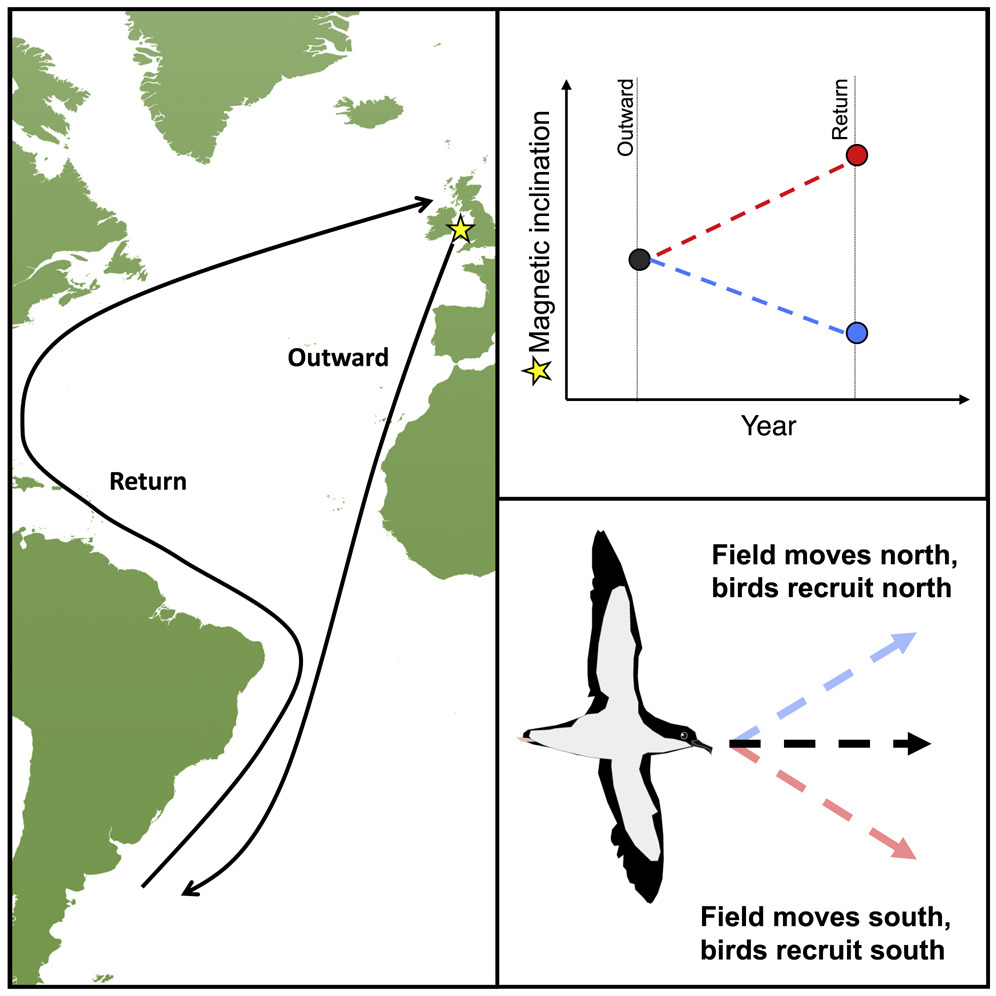
Joe Wynn (Oxford Navigation Group, Department of Zoology, University of Oxford, UK) and colleagues have an in-press paper in the journal Current Biology that provides the first evidence for magnetoreception in a pelagic seabird, the Manx Shearwater Puffinus puffinus.
The paper’s summary follows:
“In migratory animals for whom post-natal care is limited, it is essential that there are inherited mechanisms whereby an individual can navigate—first, to the terminus of their migration, and second, back to a suitable breeding site. In birds, empirical evidence suggests that orientation on first migration is controlled by an inherited navigational vector, a direction and a distance in which to move (the “clock and compass” model). The mechanism and information that underlie the return to the natal breeding site are, however, almost entirely unknown. A potential solution to this problem would be for an animal to learn the values for spatially and temporally stable gradient cues that specifically indicate the location of the natal site. One potential cue for latitude is magnetic inclination. Here, we use ringing recoveries made over the last 80 years to investigate whether magnetic inclination might be used as a navigational cue to control the latitude of recruitment in a trans-global migrant, the Manx shearwater (Puffinus puffinus). We find that small changes in inclination between when a bird fledges and when it returns from first migration correlate with probabilistic changes in latitude at recruitment, in doing so quantitatively fulfilling a priori predictions as to the magnitude and direction of latitudinal shift. This, we believe, suggests that (1) natal magnetic inclination is learnt prior to fledging and (2) is used to provide latitudinal information when making the first return trip from the wintering grounds.”

Manx Shearwater, photograph by Nathan Fletcher
Reference:
Wynn, J., Padget, O., Mouritsen, H., Perrins, C. & Guilford, T. 2020. Natal imprinting to the Earth’s magnetic field in a pelagic seabird. Current Biology doi.org/10.1016/j.cub.2020.05.039.

 English
English  Français
Français  Español
Español